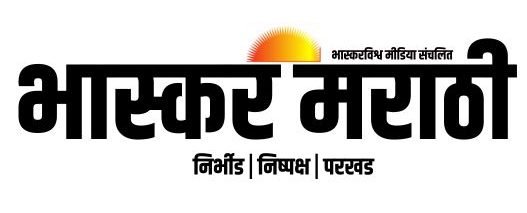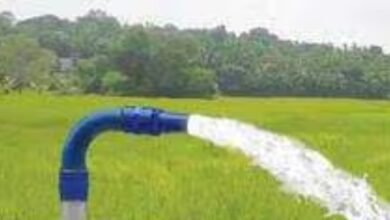How to Choose the Right Auto Insurance Policy, How to Save Money on Auto Insurance
Understanding Auto Insurance: A Comprehensive Guide


Introduction to Auto Insurance
Auto insurance is a contract between a vehicle owner and an insurance company that provides financial protection against losses arising from car accidents, theft, and other damages. This coverage is a critical aspect of vehicle ownership, ensuring that drivers are not financially devastated by unforeseen events. At its core, auto insurance is a form of risk management, a strategy employed to mitigate potential financial losses by transferring the risk to an insurance provider.
The necessity of auto insurance cannot be overstated. In many countries, it is a legal requirement for vehicle owners. Without adequate coverage, drivers may face severe financial burdens resulting from accidents, legal liabilities, or damage to their cars. Auto insurance offers peace of mind, knowing that in the event of an incident, the insurance company will cover most, if not all, repair costs, medical expenses, and liability claims.
- गुगल ॲप
https://bit.ly/3RaPEOb - व्हॉट्सॲप ग्रुप
https://bit.ly/4dUMnMR - व्हॉट्सॲप चॅनेल
https://bit.ly/3V1gLwq - फेसबुक पेज
https://bit.ly/451xGU8 - टेलिग्राम
https://bit.ly/3wVCVbe
Moreover, auto insurance plays a significant role in promoting road safety. Insurance companies often reward safe driving behaviors with lower premiums, incentivizing drivers to maintain good driving records. This, in turn, reduces the likelihood of accidents and enhances overall road safety. Additionally, comprehensive auto insurance policies provide coverage beyond basic liability, including protection against natural disasters, vandalism, and even uninsured motorists.
Understanding the various components of auto insurance and selecting the right coverage can be overwhelming. However, being well-informed about the types of coverage available and their benefits can help vehicle owners make educated decisions. Key components typically include liability coverage, which pays for damages and injuries you cause to others; collision coverage, which pays for your vehicle’s repairs after an accident; and comprehensive coverage, which covers non-collision-related incidents such as theft or natural disasters.
In essence, auto insurance is an indispensable tool for managing risks associated with vehicle ownership. By providing financial protection and promoting safer driving practices, it not only safeguards the interests of individual drivers but also contributes to the broader goal of road safety. As we delve deeper into the different aspects of auto insurance in this guide, you’ll gain a clearer understanding of its importance and how to choose the best coverage for your needs.
Types of Auto Insurance Coverage
Auto insurance encompasses a range of coverage types, each designed to protect against specific risks and scenarios. Understanding these various coverage options is essential in making an informed decision when selecting an auto insurance policy.
Liability Coverage
Liability coverage is a fundamental component of auto insurance, mandated by law in most states. It consists of two parts: bodily injury liability and property damage liability. Bodily injury liability covers medical expenses, lost wages, and legal fees if you are found responsible for injuring another person in an accident. Property damage liability, on the other hand, covers the cost of repairing or replacing another person’s property damaged in an accident. This coverage is crucial as it helps protect you from out-of-pocket expenses arising from legal claims.
Collision Coverage
Collision coverage is designed to cover the cost of repairing or replacing your vehicle if it is damaged in an accident, regardless of who is at fault. This type of coverage is particularly beneficial for newer vehicles where repair costs can be substantial. It ensures that your investment is protected and helps you get back on the road quickly without a significant financial burden.
Comprehensive Coverage
Comprehensive coverage goes beyond accidents and covers a wide range of non-collision-related incidents. This includes damage from natural disasters, theft, vandalism, and hitting an animal. Essentially, it provides protection for events that are typically out of your control. Comprehensive coverage is especially valuable for those who live in areas prone to severe weather conditions or high crime rates.
Personal Injury Protection (PIP)
Personal Injury Protection (PIP), also known as no-fault insurance, covers medical expenses, lost wages, and other related costs for you and your passengers, regardless of who is at fault in an accident. PIP is mandatory in some states and optional in others. It provides a broader scope of coverage compared to standard medical payment insurance, making it a critical component of a well-rounded auto insurance policy.
Uninsured/Underinsured Motorist Coverage
Uninsured/Underinsured Motorist Coverage protects you if you are involved in an accident with a driver who either has no insurance or insufficient coverage to pay for your damages. This type of coverage is essential as it ensures that you are not left bearing the financial burden in such scenarios. It covers medical expenses, lost wages, and other damages that you may incur as a result of an accident with an uninsured or underinsured driver.
Each type of auto insurance coverage plays a specific role in safeguarding you, your passengers, and your vehicle. By understanding the different coverage options available, you can tailor your insurance policy to provide comprehensive protection tailored to your needs.
Factors Affecting Auto Insurance Premiums
Auto insurance premiums are influenced by a multitude of factors, each contributing to the overall cost of the policy. Understanding these elements can help policyholders make informed decisions and potentially reduce their premiums. One of the primary factors is the driver’s age. Younger drivers, particularly those under 25, often face higher premiums due to their lack of driving experience and higher likelihood of being involved in accidents. Conversely, older drivers with a clean driving history may benefit from lower rates.
Driving history is another critical factor. Drivers with a history of accidents or traffic violations are seen as higher risk, leading to increased premiums. Conversely, a clean driving record can significantly reduce insurance costs. The type of vehicle also plays a significant role. High-performance cars, luxury vehicles, and those with expensive parts are more costly to insure due to their higher repair and replacement costs.
Location is another key determinant. Urban areas, where traffic density and accident rates are higher, tend to have higher premiums compared to rural areas. Additionally, areas with high rates of car theft or vandalism can also see increased insurance costs. Coverage limits and deductibles further impact the premium. Higher coverage limits provide greater protection but also increase the premium. Conversely, opting for a higher deductible can lower the premium, though it means the policyholder will pay more out-of-pocket in the event of a claim.
By understanding these factors, drivers can better navigate the complexities of auto insurance. Making informed choices about vehicle type, maintaining a clean driving record, and considering the impact of location and coverage options can all contribute to more affordable premiums. It is essential to evaluate these elements carefully to find a balance between adequate coverage and cost-effective insurance premiums.
How to Choose the Right Auto Insurance Policy
Choosing the right auto insurance policy involves a careful evaluation of your individual needs and a thorough comparison of available options. The first step is to assess your coverage requirements. Consider factors such as the value of your vehicle, your driving habits, and your financial situation. For instance, if you drive an older car, you might opt for basic liability coverage, while a newer, more expensive vehicle might necessitate comprehensive coverage.
Once you have determined your coverage needs, the next step is to compare quotes from various insurers. Requesting quotes from multiple companies will allow you to see a range of prices and coverage options. Be sure to compare similar policies to get an accurate understanding of what each insurer offers. Pay attention to the details in each policy, including deductibles, coverage limits, and any exclusions.
Understanding the terms and conditions of a policy is crucial. Read through the fine print to ensure you are aware of what is and isn’t covered. Look out for any hidden fees or clauses that might affect your coverage. It’s also beneficial to check the insurer’s reputation and customer service record. Reviews and ratings from current policyholders can provide valuable insights into the company’s reliability and service quality.
Adequate coverage is essential, but overpaying for unnecessary extras should be avoided. Evaluate optional coverages, such as rental car reimbursement or roadside assistance, and decide if they are worth the additional cost based on your specific needs. Discounts can often be applied to reduce your premium. Inquire about discounts for safe driving, bundling policies, or installing anti-theft devices in your vehicle.
Ultimately, selecting the right auto insurance policy requires a balance between adequate coverage and affordability. By assessing your needs, comparing quotes, understanding policy details, and exploring potential discounts, you can find a policy that provides the protection you need without straining your budget.
The Claims Process: What to Do After an Accident
Experiencing a car accident can be unsettling, but knowing the appropriate steps to take can significantly streamline the claims process with your auto insurance company. Immediate and organized action is essential to ensure an efficient and fair resolution.
First and foremost, prioritize safety. Ensure that all involved parties are safe and, if necessary, seek medical attention. Once safety is ensured, gather as much evidence as possible from the accident scene. This includes taking photographs of the vehicles, the scene, and any visible damages. Collecting contact information from witnesses and the other driver(s) is also crucial. This evidence will be pivotal during the claims adjustment process.
Next, contact the police to report the accident, even if it appears minor. A police report serves as an official record of the incident and can provide valuable information for your insurance claim. Make sure to obtain a copy of the police report or, at the very least, the report number.
Notify your insurance company as soon as possible. Many insurers have a 24-hour claims reporting hotline or a mobile app for quick access. Be prepared to provide detailed information about the accident, including the date, time, location, and a description of the events. Additionally, provide the insurer with the evidence you collected at the scene.
Once the claim is filed, an insurance adjuster will be assigned to your case. The adjuster will review the evidence, assess the damages, and determine the extent of coverage based on your policy. They may also arrange for an inspection of your vehicle. It is important to cooperate fully with the adjuster and provide any additional information or documentation they may request.
The final step in the claims process is the settlement. After the adjuster completes their evaluation, the insurer will offer a settlement based on the terms of your policy and the extent of the damages. Compensation may include repairs to your vehicle, medical expenses, and other related costs. If you disagree with the settlement offer, you have the right to negotiate or seek further clarification.
Understanding the claims process and taking prompt, organized action can greatly ease the stress of dealing with a car accident. By following these steps, you can ensure a smoother experience with your auto insurance company and work towards a fair resolution.
Common Myths About Auto Insurance
Auto insurance is a complex topic often surrounded by numerous myths and misconceptions. One prevalent myth is the belief that red cars cost more to insure. In reality, the color of your car has no bearing on your insurance premiums. Insurers focus on factors such as the make, model, age of the vehicle, and the driver’s history, rather than the car’s color.
Another widespread misconception is that older drivers always pay more for auto insurance. While it is true that young, inexperienced drivers typically face higher premiums, older drivers can actually benefit from reduced rates. Many insurance companies offer discounts for drivers over a certain age who maintain clean driving records. However, it is essential to note that premiums can increase again for very elderly drivers due to potential declines in driving abilities.
Moreover, there is often confusion regarding comprehensive coverage. Many people falsely believe that comprehensive coverage includes everything. In fact, comprehensive insurance is designed to cover specific types of damage to your vehicle that are not caused by a collision, such as theft, vandalism, or natural disasters. It does not, however, cover mechanical breakdowns or regular wear and tear.
Additionally, a common myth is that your personal auto insurance will cover rental cars equally. While personal auto insurance policies often include some coverage for rentals, it does not always extend fully to rental vehicles, particularly for international rentals. It is advisable to check with your insurance provider about the specifics of your coverage before renting a car.
Understanding these myths and misconceptions can help you make more informed decisions about your auto insurance needs. By separating fact from fiction, you can ensure that you are adequately covered while potentially saving money on your premiums. Always consult with your insurance provider to clarify any uncertainties regarding your policy.
How to Save Money on Auto Insurance
Managing auto insurance costs effectively is crucial for most drivers. One of the most straightforward strategies is bundling policies. Many insurance providers offer discounts when you combine multiple policies, such as auto and home insurance, with the same company. This approach not only simplifies policy management but also brings financial benefits.
Increasing your deductible is another way to lower your premium. A higher deductible means you agree to pay more out-of-pocket in the event of a claim, which can significantly reduce your monthly or annual payments. However, it’s essential to ensure that you can afford the higher deductible in case of an accident.
Maintaining a clean driving record is perhaps one of the most effective ways to secure lower auto insurance rates. Insurance companies typically reward drivers who have a history of safe driving with lower premiums. Avoiding traffic violations and accidents can help you stay in the low-risk category, thereby reducing your costs.
Take advantage of the various discounts that insurance companies offer. These can include discounts for good students, low mileage, safety features in your vehicle, and even for completing defensive driving courses. It’s worthwhile to ask your insurer about all potential discounts to ensure you are not missing out on any savings opportunities.
Regularly reviewing and updating your policy can also contribute to cost savings. Life circumstances change, and so do insurance needs. Regularly assessing your coverage ensures that you are not over-insured or under-insured. This practice can help you adjust your policy to better suit your current situation, potentially reducing costs.
By employing these strategies—bundling policies, increasing deductibles, maintaining a clean driving record, utilizing available discounts, and regularly reviewing your policy—you can effectively manage and reduce your auto insurance expenses.
Future Trends in Auto Insurance
As the auto insurance industry evolves, several emerging trends and technological advancements are poised to reshape the landscape significantly. One of the most transformative developments is the advent of autonomous vehicles. Self-driving cars, with their advanced safety features and reduced likelihood of human error, are expected to lower accident rates, thereby altering risk assessment models and potentially reducing premium costs. Insurers will need to adapt to these changes by developing new underwriting criteria and policies tailored to autonomous vehicles.
Another significant trend is the adoption of telematics and usage-based insurance (UBI). Telematics involves the use of devices installed in vehicles to monitor driving behavior, such as speed, braking patterns, and mileage. This data allows insurers to offer personalized premiums based on actual driving habits, promoting safer driving and providing more equitable pricing. As telematics technology becomes more sophisticated, its integration into auto insurance policies is likely to become more widespread, benefiting both insurers and policyholders.
The role of artificial intelligence (AI) in claims processing is also set to revolutionize the auto insurance industry. AI can streamline the claims process by quickly analyzing data, assessing damage, and even predicting repair costs, thereby reducing the time and resources required for claims management. This not only enhances operational efficiency but also improves customer satisfaction by expediting claim settlements. Additionally, AI-driven fraud detection systems can identify suspicious claims patterns, helping to mitigate fraudulent activities.
Regulatory changes are another factor that will shape the future of auto insurance. As new technologies emerge, regulatory bodies will need to update their frameworks to address issues related to data privacy, cybersecurity, and the legal implications of autonomous vehicles. Insurers must stay abreast of these changes to ensure compliance and adapt their practices accordingly.
In conclusion, the future of auto insurance is being shaped by technological advancements and evolving regulatory landscapes. Autonomous vehicles, telematics, AI, and regulatory changes will drive significant shifts in the industry, requiring insurers to innovate and adapt. Those who embrace these trends will be well-positioned to thrive in the dynamic auto insurance market.




